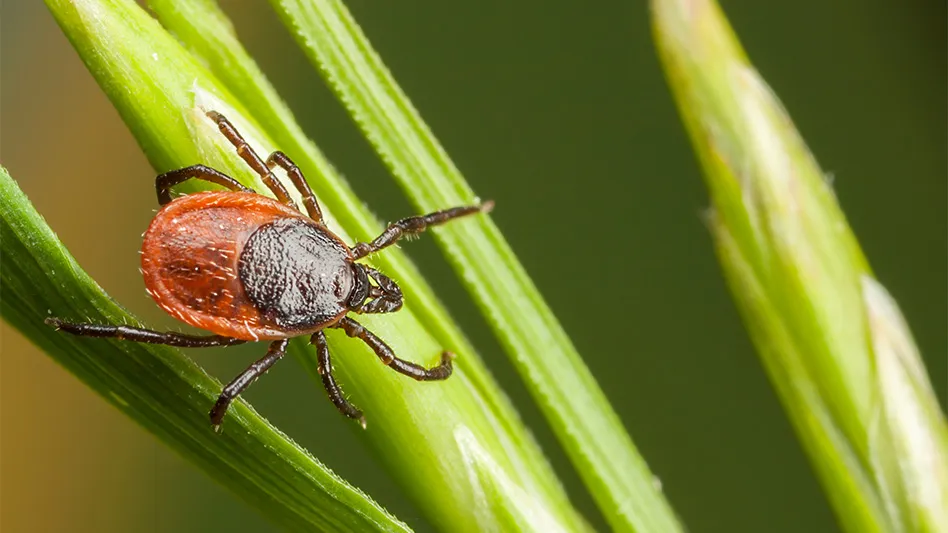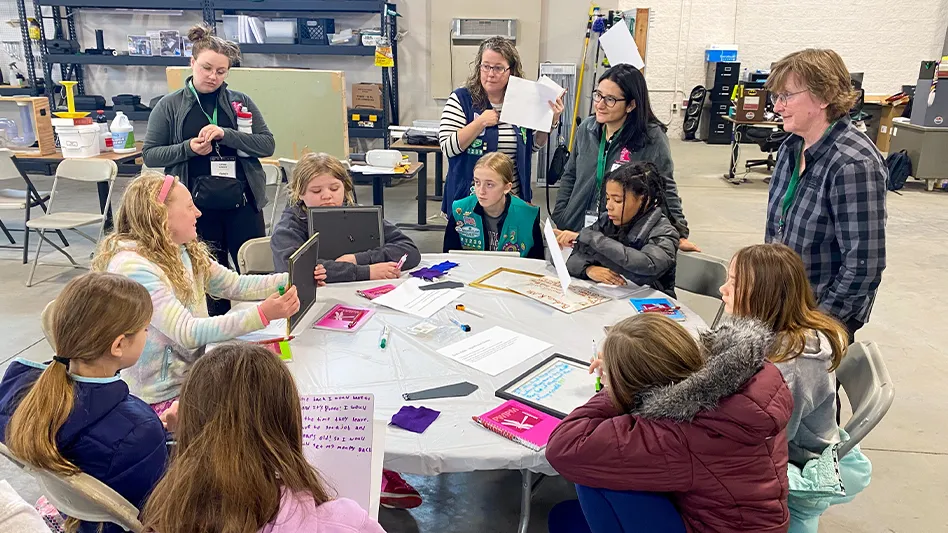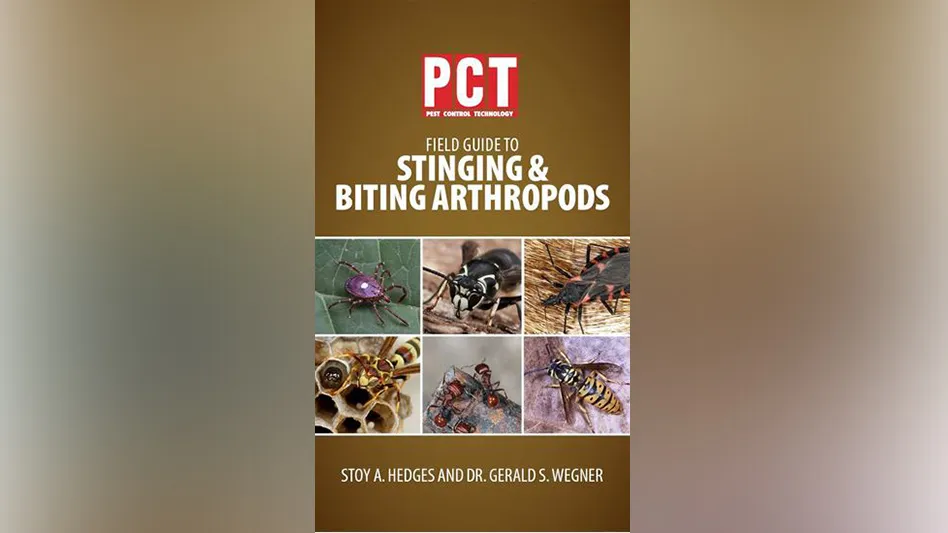Editor’s note: This article is an excerpt from the upcoming “PCT Guide to Commercial Pest Management” book, which will be published in the first quarter of 2014. Stay tuned to www.pctonline.com for more information about a special pre-publication offer for the book.
Grain storage facilities are a diverse group of structures that may not be routinely encountered by pest management professionals (PMPs). A grain storage facility can be defined as any facility that stores quantities of unprocessed or minimally processed grains, seeds or legumes. These stored grains can be for human or animal consumption or used as seed. Many types of grains can be found in grain storage facilities. Some common ones are wheat, barley, oats, corn, rice, beans, peas and soybeans. Less common are rye, sorghum, millet, triticale, lentils, sunflower seeds, grass seeds and other crop seeds.
Rodents often are the primary pest of concern in grain storage facilities. Insect tolerances and action thresholds will vary depending on the type of facility and the client. Grain that is brought to the facility for storage often will contain insects that infested the product before it was harvested. If grain is brought to the facility from another storage facility, it may be infested. At terminal elevators, the USDA will sample the grain to ensure that insects are below the allowed tolerances.
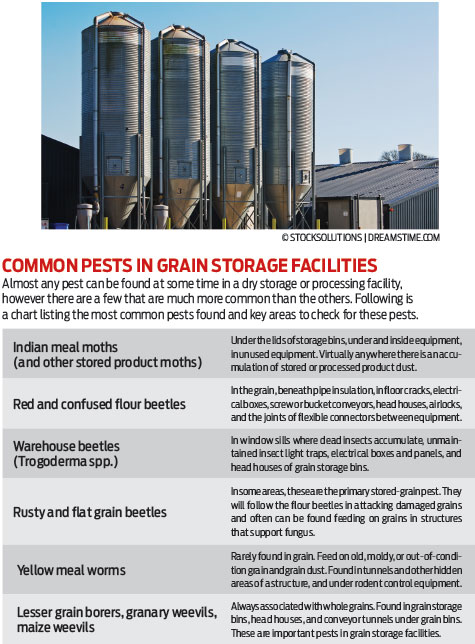
Insects that attack grain follow a succession. First, internal feeders (such as the maize weevil, granary weevil and lesser grain borer) will attack the undamaged kernels. After they feed on and damage the grain, scavengers (such as red flour beetles) will feed on the damaged kernels. Finally, after this, the grain will be heavily damaged and generally have a higher moisture content, at which point insects such as the flat and rusty grain beetle will be attracted to it.
In addition to feeding on the grain, insects infesting the structure may be living on the grain dust and spillage. Insects such as the red and confused flour beetle commonly feed on the dust. Warehouse beetles often are found outside the facility in rural areas and will enter the structure and feed on dust or dead insects.
Trece Offers Storgard Dome Quick-Change
|
Secondary pests (such as the yellow mealworm) often are found in old, decomposing grains. These insects do not pose a threat to any sound grain being stored. Clients may contract with the pest management company to perform only rodent control in the facility, while the owners monitor the grain for insects. The facility manager may choose to handle the insects internally or may contract with the pest management provider for control.
Inspection. Inspection and monitoring will comprise a portion of the time allotted for service. Pheromone monitoring is not often used in farm storage or country elevators, but may be used in large export elevators. In some cases, probe-type traps are used in the grain to monitor insect activity. Insect light traps are not commonly used in grain storage facilities because of the large quantities of dust present. Rodent multi-catch traps can be used as traps and as monitoring devices for exterior and interior rodent activity.
The tools of the inspection kit should be as comprehensive as the non-chemical and chemical tools available to the PMP. At a minimum, tools should include:
- Flashlight. Preferably one with flexible power settings so that high power can be used for distance inspections and lower power setting used for close-up inspection work. The low setting should be in the 40- to 60-lumen range. High setting may be 100 or above lumens. An explosion-proof flashlight should be mandatory in these facilities.
- Spatula with a plastic handle (not wood) for food areas. More than one spatula is advised: one for “clean” areas and one for “dirty.”
- Vials for collecting specimens. These should be made of plastic or other nonbreakable material suitable for food plants.
- Hand lens for examining insects or other small specimens. There are several inexpensive LED-lighted hand-lens models available. The hand lens should be capable of at least 10x magnification.
- Method of documenting findings (e.g., a PDA).
- Replacement supplies for monitoring devices (sticky boards, lures, replacement traps, etc.).
- Belt-mounted pouch for carrying tools.
Other inspection items that may be required include:
- Blacklight for finding rodent evidence.
- Ladder for inspection ceilings or other areas.
- Tweezers or forceps, small paint brush, or aspirator for collecting insects.
- Camera, if use is permitted.
Rodent traps will serve a dual role in control and monitoring. At a minimum, they should be placed in areas where rodents have been found and where conditions indicate a probability that rodents could be an issue in the future. Outdoor monitoring results will help in making this determination, as well as a detailed inspection to determine favorable conditions and past trap counts through an examination of trend documentation.
Third-party audit standards and corporate policies also may have requirements for trap placement and must be followed. These standards typically will focus on perimeter-wall placements, but interior walls may be important as well. Use the results of the collected data to perfect the program.
The author, director of technical services for Sprague Pest Solutions, Tacoma, Wash., is a 30-year veteran of the pest management industry.
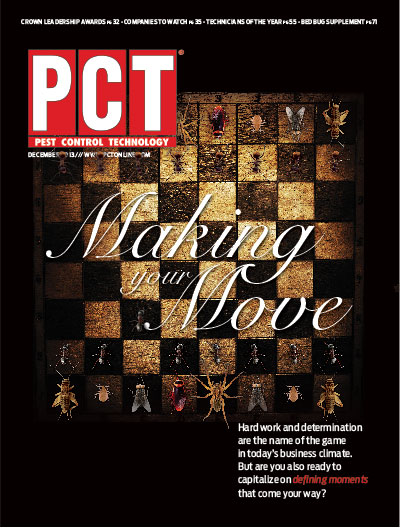
Explore the December 2013 Issue
Check out more from this issue and find you next story to read.
Latest from Pest Control Technology
- Viking Pest Control Organizes a Charity Bike Build for Local Families
- Gaining Control of Structure-Infesting Carpenter Ants
- Big Blue Bug’s Brian Goldman Receives Rhode Island Small Business Person of the Year Award
- UF Researchers Examine How Much Bait it Takes to Eliminate a Subterranean Termite Colony
- Women in Pest Control Group Continues to Grow, Provide Opportunities in the Industry
- NPMA Announces Results of 2024-2025 Board of Directors Election
- Massey Services Acquires Orange Environmental Services
- Hawx Pest Control Wins Bronze Stevie Award for Sustainability

